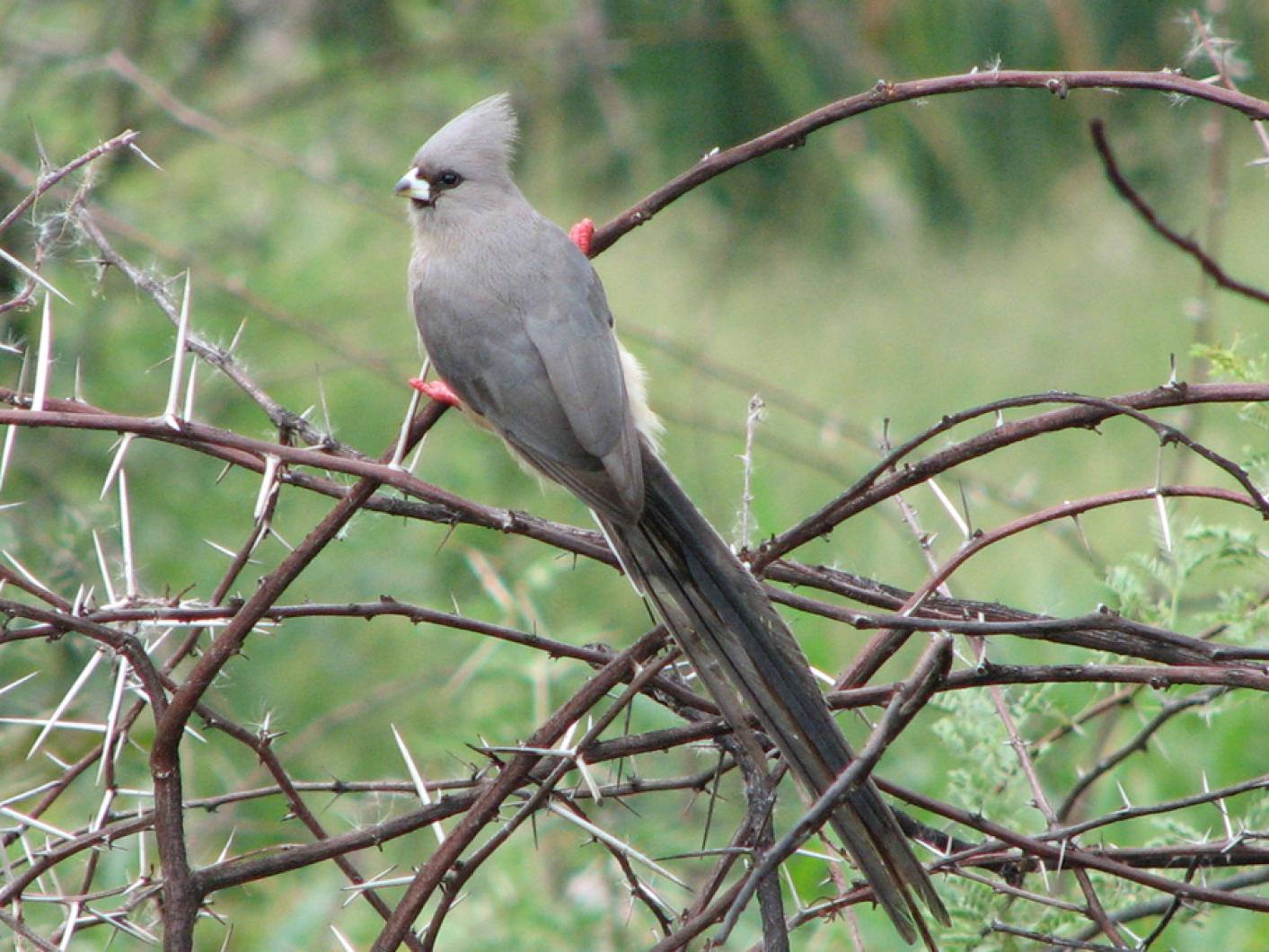Four intrepid travelers from the Vineyard met in Atlanta, Ga. and climbed on a plane to cross the Atlantic. Eighteen hours later, after a stop in Dakar, they arrived in Johannesburg, South Africa. They dropped their gear in their rooms, gathered in one room, turned on CNN and watched Obama’s inaugural address. Afterwards they supped on king klip, a delicious South Africa fish and tried South African beer and wine. A very civilized and relaxing evening as we figured our birding and game safari in Namibia and Botswana would not be so mellow. Little did we know.
A relatively short flight in the morning took us to Windhoek, Namibia where we were met by our naturalist guide, Josh Engel. Department of small worlds — although Josh was brought up in Chicago he has been working in Africa for close to three years, and not only had he been to the Vineyard but his aunt, Judith Birsh, lives in West Tisbury! We felt we were in good hands.
We did a little bird watching around Windhoek that afternoon, but our real adventure started the next day when we drove east across the mountains down into the Namib Plains. Our first mammals were Hartman’s mountain zebras and kudu. There seemed to be hawks everywhere on the trees and poles along the way, Gabar goshawk, black-breasted snake-eagle and the ever-present pale chanting goshawk.
Swakopmund was our overnight destination, and after dropping off our luggage we went to the Atlantic shore and ate lunch while watching Cape gannets and swift terns. Walvis Bay area the following day gave us great views of greater and lesser flamingos and a variety of shorebirds. The most spectacular part of this leg of our journey was our afternoon excursion. We boarded a Cessna and for three hours we flew over the Namib desert and gravel plains and then down the coastline spotting seal colonies, masses of flamingos and shipwrecks. The sensational red dunes, the highest in the world we were told, will be in our minds forever.
Spitzkoppe, a strange place with huge granite boulders (called iselbergs) that rise up from the desert, was our next stop. Here we were looking for a special endemic bird, a Herero chat. Unfortunately we struck out, but found other great birds including rosy-faced lovebirds and Bokmakierie. This was our first taste of the desert heat, but Josh found us some shade and we ate lunch and observed rock art at the same time. We overnighted in an eco-lodge complete with a pool that had a cement crocodile at the bottom and were awoken the next morning by a raucous chorus of Hartlaub’s francolins which look much like a mix of bobwhite and ruffed grouse. The accommodations were tents on platforms covered by either a second material roof or thatch. They frequently had their showers outside, but the toilets were at the back of the tent. Quite civilized, although not totally insect free.
The Desert Rhino camp was our next destination as we were in search of the black rhino which is very rare. The ride in was very rough but in an open vehicle so viewing and photographing was super. When we arrived at the camp we were blown away. There in the middle of nowhere were elegant tents again on platforms and flocks of helmeted guinea fowl, gray go-away birds and odd plants called Welwitschias. We did find two Damara black rhinos as well as oryx and springbok, and shortly thereafter we had a fine luncheon served on a card table spread with a tablecloth while sitting in comfy chairs under an acacia tree. It was interesting to learn that our specialty trackers hired to find the rhinos were poachers in their previous lives. Now these Namibians are using their abilities to earn money in a less destructive fashion.
Bird Sightings
This news is fairly old but is as follows:
American woodcock have been heard and sighted in several places. John Liller and friends spotted three at Felix Neck in full display on Feb. 14. Sue Silva heard one around dusk on the West Tisbury side of Tisbury Great Pond the following day.
Many people have been seeing red-winged blackbirds and Tom Engley had a flock show up at his feeder at Oyster Watcha on Feb. 20.
Sue Silva and Eleanor Waldron have had wintering hermit thrushes, American robins and eastern bluebirds in their West Tisbury yards. Sue counted 22 northern cardinals at her Indian Hill feeder one wintery day in January and has had a brown thrasher and two gray catbirds in early February. She also had a common redpoll and a swamp sparrow for a day the first week of February.
Randy Rynd watched a winter wren flitting around her chicken yard in late January and Luanne Johnson still had her yellow-bellied sapsucker on Jan. 21.
John Liller spotted several hundred razorbills off Gay Head on Feb. 14 and saw four red-breasted nuthatches on Chappaquiddick the following day.
Spring is in the air, so be sure to call in your or e-mail your sightings.
Report your bird sightings to the M.V. Bird Hotline at 508-627-4922 or e-mail to birds@mvgazette.com.
Susan B. Whiting is co-author of Vineyard Birds and newly published Vineyard Birds II and led bird tours for Osprey Tours to Central and South America for 30 years.





Comments
Comment policy »